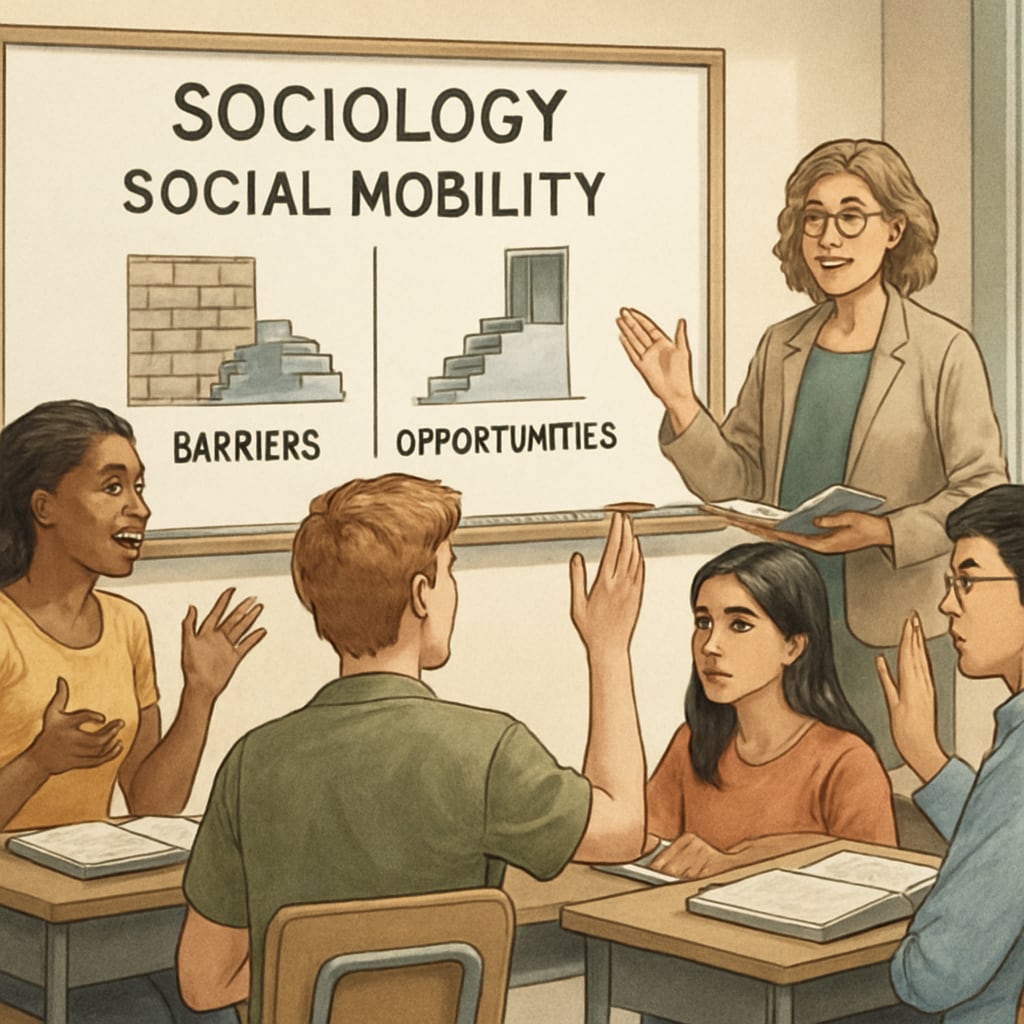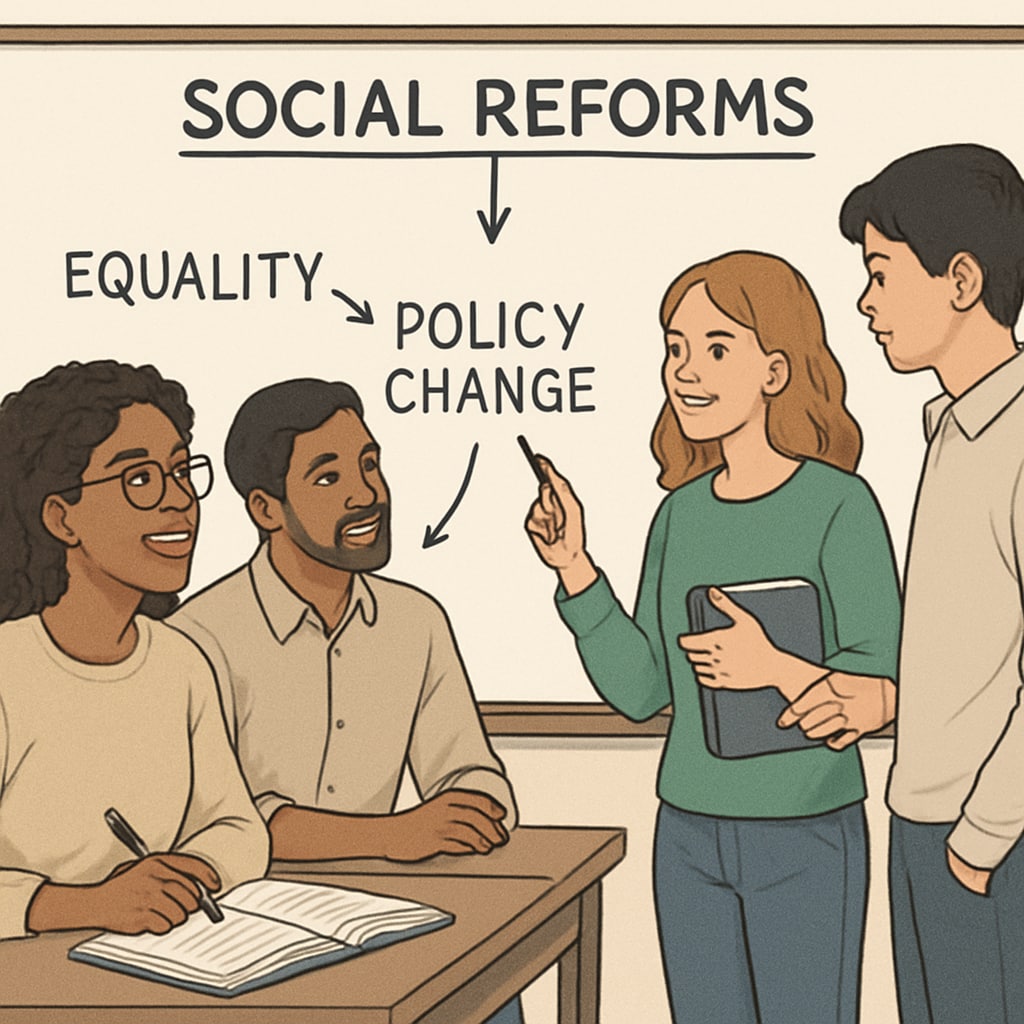The intersection of the class system, sociology education, and fixed beliefs presents a complex challenge in today’s K12 schooling. Young minds are increasingly exposed to narratives about class immobility, often framed as inevitable barriers. While it is crucial to prepare students for real-world inequalities, overemphasizing “class immobility” risks fostering fatalism rather than empowering them with the hope and tools to overcome such barriers. This article explores how educators can strike a balance between realism and optimism, enabling students to develop critical thinking without falling into the trap of social determinism.
Understanding the Role of Social Mobility in Sociology Education
Social mobility—the ability of individuals or groups to move within a social hierarchy—has long been a cornerstone of sociology education. It provides students with the tools to understand how societal structures impact opportunities and outcomes. However, the way this topic is taught can significantly influence students’ perspectives on their future possibilities. On one hand, a focus on systemic barriers can be enlightening, helping students grasp the realities of inequality. On the other hand, overly deterministic narratives about the rigidity of the class system can discourage ambition and foster a sense of helplessness.
For instance, studies have shown that when students are repeatedly told that their socio-economic background dictates their future, they are less likely to pursue challenging goals. This phenomenon, sometimes referred to as the “fixed mindset trap,” can reinforce stereotypes and limit aspirations. Therefore, educators must tread carefully, ensuring that lessons on inequality do not inadvertently reinforce it.

Challenges in Teaching Social Mobility Without Reinforcing Class Barriers
One significant challenge when teaching about social mobility is avoiding the reinforcement of class barriers. By focusing too heavily on systemic inequities, educators may unintentionally communicate a message of inevitability—that students from lower socio-economic backgrounds have little chance of upward mobility. This is particularly concerning in schools that serve underprivileged communities, where students may already face external messages of limited potential.
To navigate this, educators can use several strategies:
- Highlight success stories: Incorporate examples of individuals who have overcome socio-economic challenges, showing that mobility is possible despite obstacles.
- Introduce structural solutions: Discuss policies or initiatives aimed at reducing inequality, helping students see that change is both necessary and achievable.
- Encourage critical thinking: Instead of presenting social mobility as either entirely possible or impossible, engage students in analyzing the factors that influence it and brainstorming ways to address them.
For example, teaching about historical movements like the Civil Rights Movement or the impact of educational reforms can inspire students to consider how collective action can bring about systemic change. This approach ensures that students are not only aware of barriers but also equipped with the mindset to challenge them.

Balancing Reality and Hope in K12 Education
Striking the right balance between realism and hope is essential in K12 education. While it is vital to teach students about systemic inequalities, it is equally important to instill a sense of agency and optimism. This balance can be achieved through the following methods:
- Focusing on agency: Emphasize that while systemic challenges exist, individuals and communities have the power to make meaningful changes.
- Promoting resilience: Encourage students to view setbacks as opportunities for growth, rather than insurmountable barriers.
- Incorporating diverse perspectives: Include voices and experiences from various socio-economic backgrounds to provide a nuanced understanding of social mobility.
In addition, collaborative projects that allow students to propose solutions to social problems can be particularly effective. Such activities not only deepen their understanding of societal structures but also empower them to see themselves as active participants in shaping the future.
The Importance of Critical Thinking Over Determinism
Ultimately, the goal of sociology education should be to cultivate critical thinkers, not passive observers of the status quo. By fostering curiosity and encouraging students to question assumptions, educators can help them develop the skills needed to analyze complex social issues. This approach moves beyond simple binaries of optimism versus pessimism, enabling students to engage with the world in a thoughtful and proactive manner.
For example, discussions about the causes of wealth inequality can be paired with debates on potential solutions, such as universal basic income or education reform. This not only deepens students’ understanding but also challenges them to consider their role in addressing such issues. As a result, they are better prepared to navigate and influence the world around them.
In conclusion, K12 education must navigate the delicate task of teaching about social mobility in a way that acknowledges systemic barriers without promoting fatalism. By balancing realism with hope and prioritizing critical thinking, educators can empower students to see themselves not as victims of the class system, but as agents of change.


